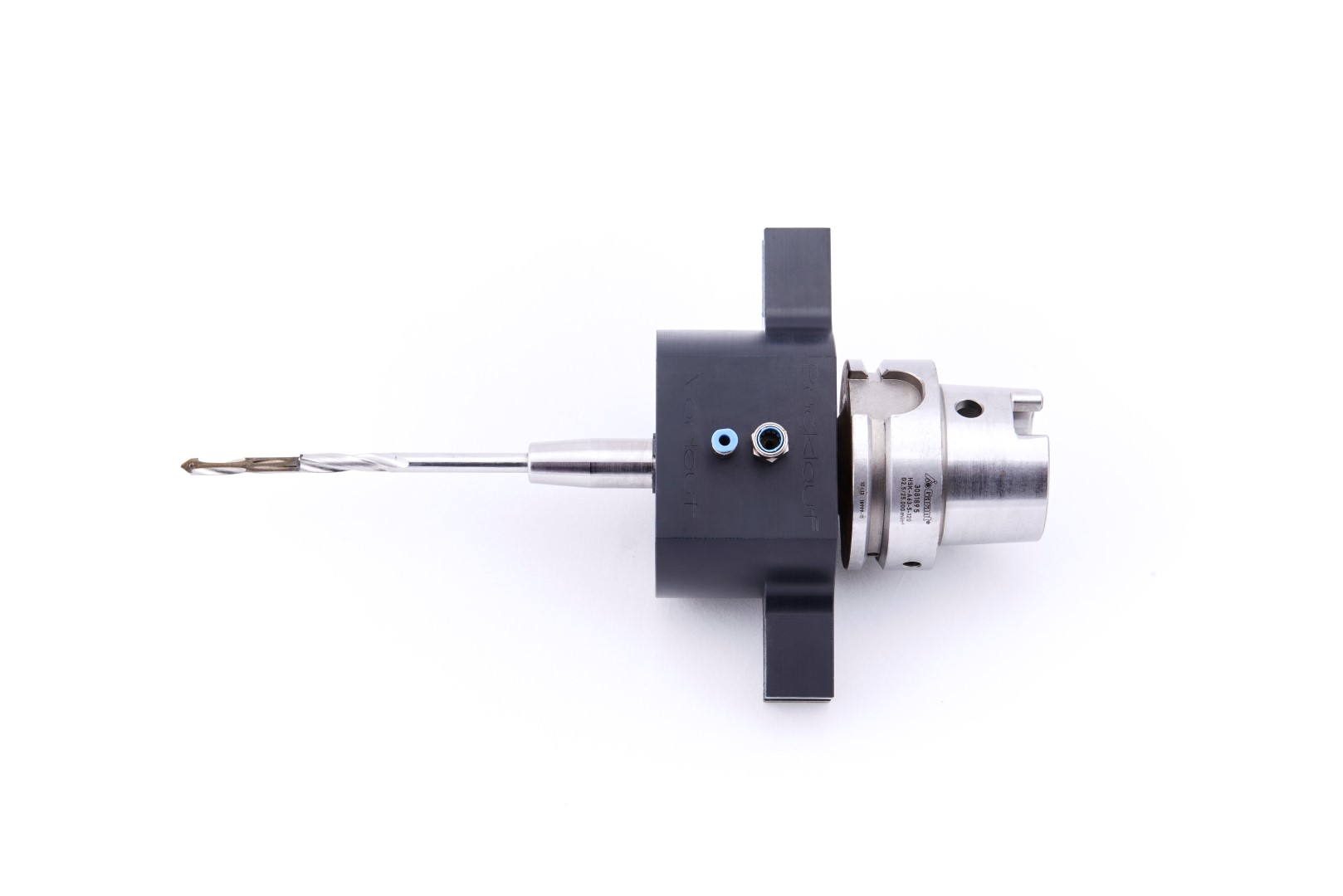
Metal laser melting is used in many sectors. The advantages of the technology over machining not only lead to peak performances in motor sports and aerospace, but even pave the way for ground-breaking success in the medical technology sector. One example of this is the use of a 3D-printed bone drill, which is capable of preventing possible tissue damage caused during operations with traditionally manufactured drills.
The Institute of Production Engineering and Machine Tools (IFW) at the Leibniz University in Hannover, Germany, turned to toolcraft while carrying out an R&D project on the development of a machining tool capable of cutting bone without causing thermal-induced osteonecrosis. The heat produced when cutting bone may cause tissue damage. This occurs at temperatures of around 48° C and higher. Because cooling the tool may cause fluid to enter the wound, it is not possible to use conventional tools with a cooling system. To date, surgery has been performed iteratively, i.e. the drilling process is repeatedly interrupted to keep the temperature as low as possible.
However, thanks to metal laser melting, it is possible to manufacture drills with integrated cooling ducts. This allows the coolant to flow inside the tool – along the helix and back to the toolholder – without coming into contact with the wound. toolcraft also developed a nonrotating prespindle attachment with an inflow and outflow function for the coolant. A continuous supply of coolant is ensured by the attached coolant tank and pump.
The internally cooled prototype was modelled on a conventional bone drill with a diameter of 6 mm. The drill's shape had to be kept the same to make it easier for users to adapt to the new tool. It was also important that the material used is well tolerated by patients. A flow and return pipe ensures a continuous flow of coolant. The internal circular cooling ducts with a diameter of 1.2 mm take the thermal energy away from the cutting edge. Horizontal drilled holes were added, which link the cooling circuit to the drill so that the coolant can be supplied and taken away. A circlip groove is used to attach the manifold. Sealing the two chambers in the manifold posed a further challenge.
At the outset of the project, the cooling capacity was determined in terms of the volumetric flow rate, temperature and thermal capacity of the coolant. The project team then developed a method for bringing a closed cooling circuit into the tool substrate while maintaining tool stability and ensuring that the tool was suitable for performing the required processes. The biocompatible material 1.4404 was selected for the drill. The shape of the drill and the internal cooling ducts was designed by Schmidt WFT using CAD and simulation software.
After the drill was produced using 3D printing and the tool was machined to its final size, practical tests were performed by IFW. Using water as a coolant, IFW drilled and measured the process temperature in artificial and bovine bone. In doing so, they measured reference temperatures at higher and lower feed rates and when the tool cooling system was turned on and off.
The results of the drilling tests show that the drill significantly reduces the temperature produced by up to about 70 percent. Thanks to the ability of the internal cooling system to compensate for increases in temperature, low feed rates no longer lead to higher temperatures. The choice of tool has a considerable impact on the success of bone surgery. Excessively high process temperatures put bones at risk of damage during almost all bone cutting procedures. This means that the technology could also be beneficial in a variety of other areas, such as the manufacture of saws.
Related Glossary Terms
- computer-aided design ( CAD)
computer-aided design ( CAD)
Product-design functions performed with the help of computers and special software.
- coolant
coolant
Fluid that reduces temperature buildup at the tool/workpiece interface during machining. Normally takes the form of a liquid such as soluble or chemical mixtures (semisynthetic, synthetic) but can be pressurized air or other gas. Because of water’s ability to absorb great quantities of heat, it is widely used as a coolant and vehicle for various cutting compounds, with the water-to-compound ratio varying with the machining task. See cutting fluid; semisynthetic cutting fluid; soluble-oil cutting fluid; synthetic cutting fluid.
- feed
feed
Rate of change of position of the tool as a whole, relative to the workpiece while cutting.
- toolholder
toolholder
Secures a cutting tool during a machining operation. Basic types include block, cartridge, chuck, collet, fixed, modular, quick-change and rotating.






